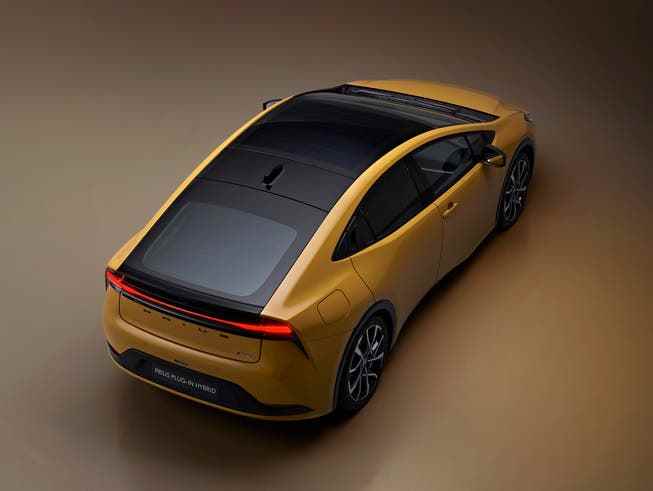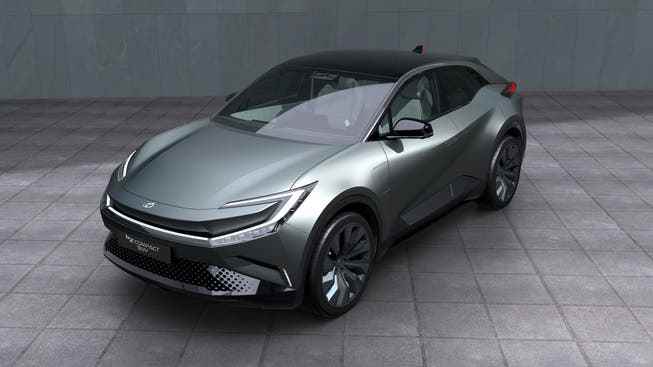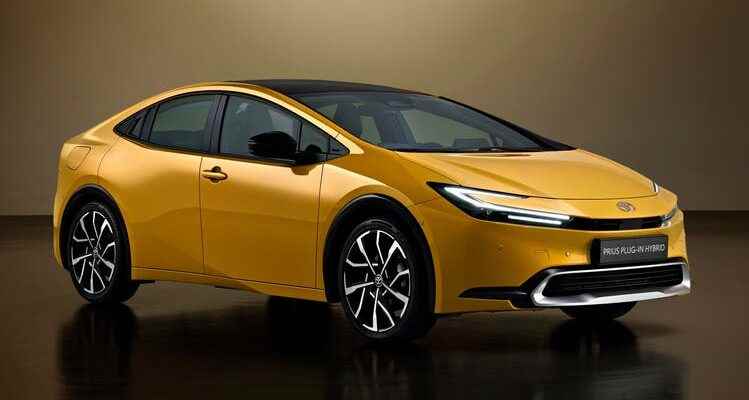The successful car giant from Japan is launching sleek models with modern drives. Toyota is suddenly becoming an important competitor to Peugeot, Citroën and Hyundai on the way to the electric car.
This sleek car comes from Toyota. It is the fifth generation of the Prius. Thanks to the streamlined shape and powerful plug-in hybrid drive, the Prius could be making a comeback.
Toyota recently surprised the world public in the new Prius with a sleek and at the same time elegant compact car. The new fifth generation Prius has a streamlined and sporty design. At least in Europe, only a plug-in hybrid with 223 hp is used as the drive. This is almost twice the performance of its predecessors. Interest in the Toyota Prius is likely to increase again significantly, because the health sandal has become a snappy sneaker.
The Toyota Prius has been the epitome of the rational car since the late 1990s. As one of the first models, it made the full hybrid drive socially acceptable. It was never particularly fast, but spread the impression of the environmentally friendly car around the world.
Four generations of the compact hybrid car have been built to date. But at first it was tough. 136,000 vehicles of the first Prius generation were sold; just 4800 of them in Europe. With the improved second generation, the Prius hype began, especially in the USA. A good 1.3 million copies were sold worldwide, of which only 84,000 in Europe.
Helped out by marketing
The Prius Generation III was the most successful to date: more than 2 million hybrid cars came onto the road, 150,000 of them in Europe. Behind the sudden success is also the open secret that Toyota had spent enormous marketing budgets at the time. Celebrities and Hollywood stars were given one of the hybrid cars as a gift – of course they only reported good things about the Prius in the media.
The fourth generation of the Prius came from 2016 and had an avant-garde design, with many rough edges. The shapeless car could no longer build on previous sales successes. Production stopped a few months ago. The Prius appeared to be buried.
The decline in interest in the Toyota Prius can also be explained by the further development of the powertrain. For four generations, Toyota stuck to the full hybrid mode. A modest petrol engine is supported by an equally modest electric motor. The small battery is made of heavy nickel metal hydride. The drive delivers at best 125 hp. The drive is very economical on short journeys. On motorway journeys, however, the petrol engine works almost exclusively, and consumption then increases significantly.
The competition has been using the plug-in hybrid drive for a number of years as a transitional technology to the electric car. Here the battery is usually a lighter lithium-ion battery that can be charged at the socket. Toyota made a first attempt with the plug-in hybrid with Generation III, but the model was heavily overpriced and received little attention.

Only the steep rear is reminiscent of previous Prius models.
Almost simultaneously with the Prius, Toyota also unveiled a pre-production study of a compact SUV. The carmaker wants to use this to underpin its approach to the European competition. The Toyota bZ Compact SUV Concept is also aerodynamically sophisticated, looks sporty and bears no resemblance to the good old RAV4 or other models from the Japanese manufacturer.

Toyota bZ Compact SUV Concept: The manufacturer is breaking new ground, at least in terms of design.
Only the recently launched bZ4X already corresponds to the new design language. At Toyota, the abbreviation bZ means “beyond zero” and is intended to mark cars on the way to the climate target of zero emissions by 2050.
This makes it clear that the new study will be electric or at least electrified as a series car. At the unveiling of the car at the Los Angeles Auto Show, which is currently taking place, Toyota announced that it wanted to remain open when it came to the types of drive: hybrid, plug-in hybrid, electric and fuel cell vehicles will be available in the future. But Toyota is also developing in the field of alternative fuels.
The Japanese group is leaving a back door away from the mainstream electric car.
